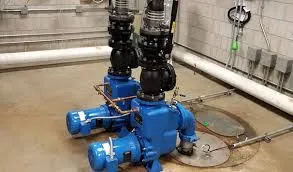English
- Afrikaans
- Albanian
- Amharic
- Arabic
- Armenian
- Azerbaijani
- Basque
- Belarusian
- Bengali
- Bosnian
- Bulgarian
- Catalan
- Cebuano
- Corsican
- Croatian
- Czech
- Danish
- Dutch
- English
- Esperanto
- Estonian
- Finnish
- French
- Frisian
- Galician
- Georgian
- German
- Greek
- Gujarati
- Haitian Creole
- hausa
- hawaiian
- Hebrew
- Hindi
- Miao
- Hungarian
- Icelandic
- igbo
- Indonesian
- irish
- Italian
- Japanese
- Javanese
- Kannada
- kazakh
- Khmer
- Rwandese
- Korean
- Kurdish
- Kyrgyz
- Lao
- Latin
- Latvian
- Lithuanian
- Luxembourgish
- Macedonian
- Malgashi
- Malay
- Malayalam
- Maltese
- Maori
- Marathi
- Mongolian
- Myanmar
- Nepali
- Norwegian
- Norwegian
- Occitan
- Pashto
- Persian
- Polish
- Portuguese
- Punjabi
- Romanian
- Russian
- Samoan
- Scottish Gaelic
- Serbian
- Sesotho
- Shona
- Sindhi
- Sinhala
- Slovak
- Slovenian
- Somali
- Spanish
- Sundanese
- Swahili
- Swedish
- Tagalog
- Tajik
- Tamil
- Tatar
- Telugu
- Thai
- Turkish
- Turkmen
- Ukrainian
- Urdu
- Uighur
- Uzbek
- Vietnamese
- Welsh
- Bantu
- Yiddish
- Yoruba
- Zulu
Telephone: +86 13120555503
Email: frank@cypump.com
Jul . 25, 2024 04:27 Back to list
Effective Pump Solutions for Handling Slurry in Various Industrial Applications and Environments
Pumps for Slurry Applications Key Considerations and Innovations
Slurry pumping is a critical process in various industries, including mining, construction, and wastewater treatment. A slurry is a mixture of solid particles suspended in a liquid, often characterized by its abrasive and corrosive nature. This makes the selection of an appropriate pump essential for ensuring efficiency, reliability, and longevity in operations.
Types of Slurry Pumps
There are several types of pumps designed specifically for handling slurry, each suited for different applications and materials. The most common types include
1. Centrifugal Pumps These pumps operate by using a rotating impeller to impart velocity to the slurry, allowing it to be discharged through a diffuser. Centrifugal pumps are ideal for low-viscosity slurries and can handle large flow rates. However, they may struggle with highly viscous or abrasive materials.
2. Positive Displacement Pumps Unlike centrifugal pumps, positive displacement pumps move the slurry by trapping a fixed amount of it and forcing it through the discharge. This type is highly effective for high-viscosity slurries, and they maintain consistent flow rates regardless of pressure changes. Examples include diaphragm pumps and piston pumps.
3. Submersible Pumps Designed to operate while submerged in the slurry, submersible pumps are ideal for applications such as dewatering in construction sites or managing sediment in reservoirs. Their design minimizes the risk of cavitation and allows for efficient operation in challenging environments.
Key Considerations
When selecting a pump for slurry applications, several factors must be considered
- Solid Content and Particle Size The concentration of solids in the slurry and the size of the particles significantly influence pump performance. Pumps must be chosen based on their ability to handle specific particle sizes and concentrations without clogging or wearing out prematurely.
pumps for slurry application

- Abrasiveness Slurry often contains abrasive materials that can wear down pump components. Pumps with hard coated or specially designed wear-resistant materials are crucial for extending lifespan and reducing maintenance costs.
- Viscosity The viscosity of the slurry can affect the pump's operational efficiency. It is essential to assess the viscosity accurately to select a pump with the right capabilities. Positive displacement pumps are generally better suited for high-viscosity slurries.
- Temperature and Chemical Compatibility Depending on the application, the temperature and chemical nature of the slurry need to be considered. Pumps must be constructed from materials that can withstand corrosive substances if necessary and operate efficiently at varying temperatures.
Innovations in Slurry Pump Technology
As industries evolve, so does the technology in slurry pumping. Recent innovations have focused on enhancing efficiency, reducing energy consumption, and improving reliability. Some of the notable advancements include
- Smart Pumps The integration of IoT (Internet of Things) technology has led to the development of smart pumps that can monitor performance in real-time, predict maintenance needs, and optimize operation, thus reducing downtime and extending pump life.
- Advanced Materials The use of advanced composites and coatings designed to resist wear and corrosion has significantly improved the durability of slurry pumps, particularly in harsh environments.
- Energy Efficiency New pump designs are focusing on energy efficiency, incorporating variable frequency drives (VFDs) to adjust the pump speed according to demand, reducing unnecessary energy consumption.
Conclusion
Pumps for slurry applications play a vital role in many industries, and selecting the right pump can dramatically impact operational effectiveness. Understanding the different types of slurry pumps, their specifications, and the latest technological advancements is crucial for industries reliant on slurry transport. As technology continues to advance, the future of slurry pumping looks to be more efficient, durable, and responsive to the demands of modern applications.
-
ISG Series Vertical Pipeline Pump - Chi Yuan Pumps Co., LTD.|Advanced Hydraulic Design&Energy-Efficient Solutions
NewsJul.30,2025
-
ISG Series Vertical Pipeline Pump - Chi Yuan Pumps Co., LTD.
NewsJul.30,2025
-
ISG Series Vertical Pipeline Pump - Chi Yuan Pumps Co., LTD.|energy-efficient fluid handling&industrial durability
NewsJul.30,2025
-
ISG Series Vertical Pipeline Pump - Chi Yuan Pumps | Advanced Engineering&Industrial Efficiency
NewsJul.30,2025
-
ISG Series Pipeline Pump - Chi Yuan Pumps | High Efficiency, Energy Saving
NewsJul.30,2025
-
ISG Series Vertical Pipeline Pump-Chi Yuan Pumps|High Efficiency&Reliable Performance
NewsJul.29,2025










